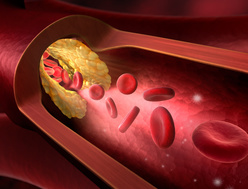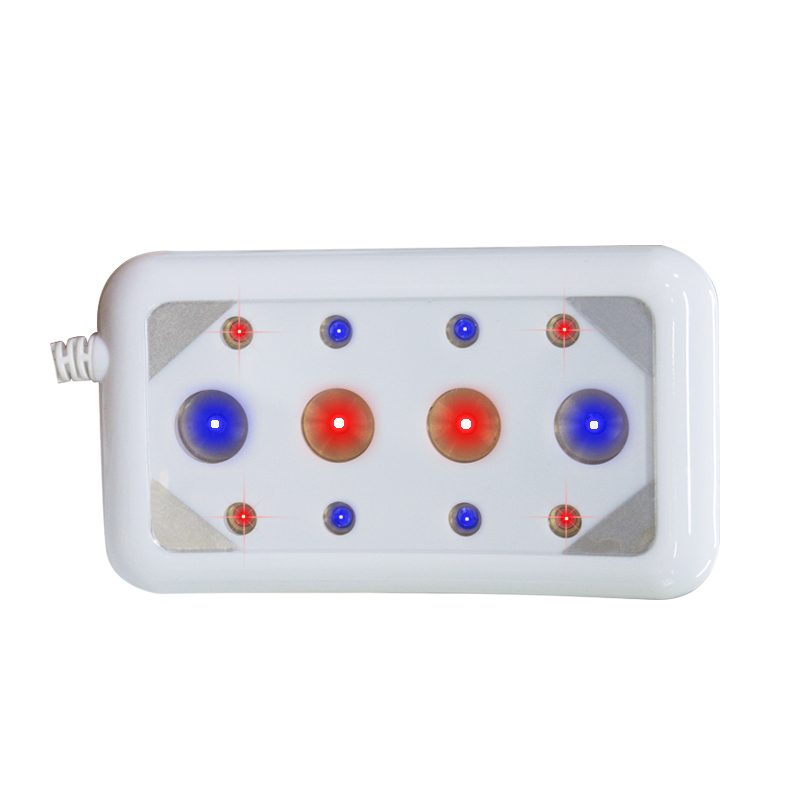The Laser Watch is an innovative 3-in-1 device that uses the latest research findings in the field of low-level-laser therapy. It combines acupuncture, local pain management and external blood irradiation and will become your ideal companion-whether at home, at work or on the go.
Areas of application: Red light
Are you also suffering from:
• Stress
• Symptoms of fatigue
• Anxiety
• Tensions
• Rapid heartbeat
• High blood pressure
• Seasonal affective disorder
• Lack of motivation
• Insomnia
These symptoms are often caused by high blood pressure and a low Melatonin and Serotonin level. The red laser is well-known for its ability to enhance cell activity and microcirculation. Furthermore, it activates the immune system by stimulating different leukocyte groups.
Activate Metabolism: Lower Blood Pressure and Improve Blood Flow
Increasing age and an unhealthy lifestyle enhance the possibility that cholesterol and other blood fats build up on vessel walls and thus impair the oxygen and nutrient supply to our organs.
Vasoconstriction leads to metabolic and microcirculation disorders which in turn result in cardiovascular and cerebrovascular diseases, high blood pressure, diabetes, stroke etc.
Laser light activates different enzymes and decomposes redundant fat in the bloodstream. It increases the oxygen amount in the blood, boosts metabolism and enhances the process of lipid peroxidation to reduce cholesterol in the vessels.
Current scientific research of Univ.-Prof. DI DDr. Gerhard Litscher and Mag. pharm. Dr.scient.med. Daniela Litscher shows the effects of the Laser Watch on the cardiovascular system. Pilot studies demonstrated that in healthy test subjects the total heart rate variability (HRV) increases briefly during stimulation with the Laser Watch. Furthermore, it caused an improvement of microcirculation (increase of 15%) during a 20-minute Laser Watch stimulation.
Source: Laser Watch – Simultaneous Laser Acupuncture and Laser Blood Irradiation at the Wrist (Daniela Litscher, Gerhard Litscher)
Relieve tensions with the laser pad
Incorrect sitting postures in front of the computer and physical or emotional tensions often cause painful muscle stiffness in the neck and in some cases even lead to tendinitis. Quite often these symptoms are also accompanied by headaches and shoulder pain which radiates into the arms. Whether sport injury or chronical pain-with the laser pad you can now easily treat aching body regions and you will achieve optimal regenerative effects on cellular level. The red light of the laser unfolds its analgesic, anti-inflammatory and reparative effects deep in the tissue layer where it induces various biochemical reactions:
• Blood vessels widen and consequently allow better oxygen transport and blood flow
• Stimulation of the mitochondrial metabolism
• Increase of ATP synthesis
• Stabilization of cell membranes
Laser Therapy Wrist Watch Cold Laser Therapy Device,Laser Therapy Wrist Watch,Laser Therapy Watch,Laser Wrist Watch Shenzhen Guangyang Zhongkang Technology Co., Ltd , http://www.lighttherapymachine.com




Rice-duck ecological breeding technology
Rice-duck eco-planting techniques refer to the rearing of rice in paddy field and the stocking of a certain number of wild ducks. Without the use of chemical pesticides, the use of rice resistance, rice beneficial organisms, biological pesticides, etc. to control the pests of rice fields To achieve a double harvest of rice and ducks, an ecological breeding technology. The technology was jointly researched and completed by Hunan Agricultural University and other institutions. It passed the expert appraisal in 2001 and has conducted demonstration and promotion of large areas in Changsha, Hanshou, and Liuyang counties and cities. First, technical characteristics First, increase income. Using rice-duck ecological breeding techniques can increase income by more than 160 yuan per mu. The second is the good quality of rice hygiene. Rice produced using the rice-duck ecological seeding technology has a 30-80% reduction in the content of malathion, phosphide, cyanide, and cyanide bitter than the national standard. The third is obvious ecological benefits. Ducks can prey on adults, larvae and some sclerotium mycelium in rice field pests. They can remove diseased leaves, old leaves, and rice field weeds. Therefore, rice sheath blight, stem borer, rice leaf roller, rice fly Rice pests such as cockroaches, rice borers, armyworms, and weeds in paddy fields have good control effects. Under normal circumstances, they will not exceed control indicators. Due to the activities of the ducks, the permeability of paddy soils was greatly improved, the harm of toxic substances was reduced, and the growth of rice roots was promoted. II. Operational Procedures 1. Selection of Paddy Fields and Varieties 1 Paddy Fields: Paddy fields with sufficient water sources and abundant sunlight should be selected so that ducks can inhabit and feed on 2 rice varieties: Select high-quality rice varieties with compact plant type, high yield performance, and strong resistance . Early rice used Xiangzaoxian No. 31, Xiangzaojing No. 32, Xiangliangyou 68, etc.; Late rice selected Xiangwanwan No. 9; Xiangwanyu No. 12, Jinyou 207, Xinxiangyou 80, etc.; middle rice selected Liangyoupeijiu and other varieties or combination. 3Ducks: Select excellent duck species with strong vitality, wide adaptability, strong wildness, good resistance, early egg production, high egg production rate, medium size and small size, such as Jiangnan No. 1 water duck, Sichuan duck, Binhu Ducks, Jianchang ducks and so on. It is required that the size of the duck body be adapted to the planting density of rice so as to meet the requirement of the duck to walk freely. The weeding effect of the duck 2. Field cultivation of rice 1 Fertilization for all fields: The requirements for field preparation are as follows: coarse and fine, flat, with a height difference of no more than 5 cm. The implementation of one-time fertilization, do not use top dressing, light nitrogen phosphorus potassium, that is, 25% rice fertilizer per acre per acre compound fertilizer 50 kg, plus urea 4-6 kg. 2 Density and basic seedlings: Early rice should be planted with 2-32,000 pounds per acre, conventional rice basic seedlings should be 12-130,000, and basic seedlings for hybrid rice should be 8-10 million. Late rice transplanted or transplanted per acre 18,000-20,000, conventional rice basic seedlings 1050-1150, basic seedlings hybrid rice 7-90000. 3 Water slurry management: After the rice is thrown (turned) and returned to green, the 1-2 cm water layer is maintained for a long period of time until the milk ripening period of rice, and the dry and wet strong seeds are applied after the duck is collected to promote grouting. Do not expose the fields or fields, and the fields should not be short of water. 4 pest control. Ducks do not use insecticides and herbicides for ducks in rice fields. Except for rice blast, most of the diseases and weeds in rice can be controlled below the control index in the year of occurrence or occurrence, and some of the diseases and insects have a major outbreak. For generations that meet the prevention and control criteria, biological pesticides (such as Bt emulsions) can be used for prevention and control. 3. The duckling enclosure technique 1 The number of ducks and the area of ​​rice fields. Ducks or 12 to 20 ducks will be stocked every mu of farmland. The area of ​​each hill is between 1 mu and 2 mu. If the area of ​​a hill is too large, it must be kept with a fence to avoid gathering ducks in groups and stepping on the seedlings. 2 fence, building, ditching, digging. Seine nets: In order to prevent ducks from escaping, use 2 to 2.5 kg of three-finger nylon nets per mu along the surrounding area. The fence is 60 centimeters high and is supported by a small bamboo pole every 1.5-2 meters. The fence is 50-100 centimeters away from the field. Tentacles over 80 centimeters in height may not be enclosed. Build a house: On one side or corner of the field, build a duck perched on a scale of one square meter per ten feathers, eat, shelter, and shelter from the cold. The duck house is supported by wooden sticks, surrounded by a bit of ventilation (breathable and breathable), and the roof is covered with straw or textile bags to avoid the sun and the sun. Place a food bowl with a wooden or bamboo tile. Ditching and digging: In order for the ducks to have a place to take water and bathe, dig a duck in a duck shed with a depth of 50 cm and an area of ​​about two sheds. 3 Scientific feeding. After the duck is hatched, put the duckbill in the water 2-3 times to develop the habit of draught and prevent the duckling from dehydration and death. The ducklings must be kept indoors in a sterile room. Disinfected food containers and water boxes should be placed indoors for food and water use. If the indoor temperature is lower than 20°C, use a large bulb or heater to warm the ducklings. When heating, prevent the ducks from gathering and prevent the ducks from suffocating. The ducklings hatched are each fed with ducklings with a full price feed of 500 grams and a small amount of rice for 10-15 days. Then they are fed with rice, rice, and corn and other cereals. After the rice is put into the field, they are used daily for rice, corn and other grains. 50-100 grams of feed is kept; 100 grams of grain feed such as rice and corn is used for every feather during the laying period, and ducks (eggs and ducks) of Jiangnan No. 1 are kept for 85-90 days. During feeding in the field, the feed must be put in moderately, and if it is too little, the ducks will suffer from malnutrition and affect the normal development. Too much will not help the ducks to feed in the field and it will be difficult to eliminate the old rice leaves, diseased leaves, weeds and reduce the occurrence of pests. the goal of. 4 timely release ducks, ducks. The time for dropping ducks was decided according to the throwing time of the rice and the feeding period of the ducklings, that is, ducks can be put into the field after 18 to 20 days of hatching and 15 days after the rice is transplanted. Ducking can be directly put into the field. Gathering time: In the early morning, middle and late rice, enter the hook head seed period, ducks will be taken back or enclosed in the field duck house. There are two main forms of duck rearing in paddy fields in the double-season rice region. One is to put ducks in each of early rice and late rice. Its characteristic is that two batches of ducks can be harvested. If ducklings are placed, the ducks are tender and the individuals are small and suitable for the processing of sauce ducks. This mode is suitable for stocking ducks. Second, only one duck is put in the whole year, ie, the early rice is transplanted and thrown into the field. When the early rice is hooked and scattered, the duck is collected and reared for 10 to 15 days. After the late rice is transplanted, the rice is transplanted. Ducks were allowed to fall into the field until the late rice was ripe. This type of duckling is compared with the former one, and it is characterized by a long growth cycle of the duck, and it can even last until the second year. Therefore, it is suitable for stocking female ducks to obtain profit from egg production. 5 Prevention and control of diseases: indoor duck houses are disinfected with 2% quicklime, and food containers and water containers for ducks are to be sterilized with 25% of the Soviet Union. After 20 days of duck growth, duck vaccines are vaccinated to prevent duck gizzards and improve immunity. . Ducklings can be fed with oxytetracycline calcium salt in appropriate amounts to prevent other diseases. Third, pay attention to matters 1, to increase the egg production rate The length of the duck egg production period is closely related to the length of light. From November of the year to March of the second year, 100 watts of electric lights were installed in the duck house, which increased the light time by 1-2 hours per night and increased egg production by 30-40%. Ducks rely mainly on egg production to achieve economic benefits. Duck age of 1-3 years is the flourishing period of laying ducks. After 1 year of age, the eggs enter a flourishing period. After the age of 3, the egg production rate drops, which can be sold to the market. It is necessary to use the strong egg production period to increase the egg production rate. 2. The control of rice blast caused by rice blast and rice stubble is controlled mainly through the selection of disease-resistant varieties and the use of low-nitrogen phosphorus, potassium, and other cultivation measures. Under normal circumstances, pesticides are not used. In mountainous and hilly areas, attention should be paid to the damage of rice borers, and the method of controlling the length of ducks or extending the size of ducks in rice fields can be used for control. 3, the use of high-quality feed 1 It is strictly prohibited feeding ducks with moldy and stinky feed, to prevent the spread of the disease and duck growth and development. 2 Do not feed ducks with stink bugs. 3 In order to ensure the hygienic quality of ducks and eggs, it is forbidden to use feeds containing hormones and antibiotics for feeding. 4, to strengthen the feeding and management 1 during field farming, to prevent snakes, weasels and other prey ducklings. 2 During the breeding period, ducklings should be added when feeding and breeding to reduce the difficulty of collecting ducks.